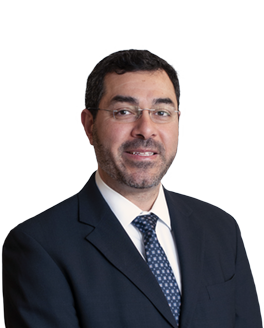-
Featured
Patient, Procedure Factors May Predict Surgical Site Infection Risk After TJA
The use of an artificial neural network model identified Charlson comorbidity index and smoking status as the strongest predictors of surgical site infection after total joint arthroplasty.
-
Featured
Spinal Anesthesia Is a Viable Option for Revision THA in Selected Patients
When spinal anesthesia was administered during revision total hip arthroplasty, perioperative blood loss, inhospital complications and length of stay were significantly lower than in a propensity-matched cohort that received general anesthesia.
-
Value of Hip Arthroscopy for Femoroacetabular Impingement Varies by Procedure Type, Preoperative Function
Scott D. Martin, MD, and colleagues say the value of hip arthroscopy for femoroacetabular impingement, when analyzed with time-driven activity-based costing, varies widely according to preoperative patient-reported function as well as osteoplasty type and other intraoperative factors.
-
Clinical Outcomes Are Comparable With Robotic and Manual Total Hip Arthroplasty
Christopher M. Melnic, MD, and colleagues found that patients undergoing robotic total hip arthroplasty were similar to those who had manual surgery in their rates of achieving the minimal clinically important difference for improvement on questionnaires about physical and mental function.
-
HbA1c Levels >6.6% Linked to Greater Risk of Repeat Surgery After ACL Reconstruction
Ophelie Lavoie-Gagne, MD, Miho J. Tanaka, MD, PhD, and colleagues conducted the first study of how preoperative glycemic control affects outcomes of ACL reconstruction, finding HbA1c ≥6.7% increases the risk of any surgical complication by 66% and increases the need for reoperation for surgical complications by 45%.
-
First AI Model Developed for Diagnosis of Hip Dysplasia From Plain Radiographs
Martin Magnéli, MD, PhD, Orhun Muratoglu, PhD, and colleagues have developed two convolutional neural networks that can read plain radiographs and classify hips as dysplastic or non-dysplastic with 83% to 92% accuracy, and detect the severity of hip dysplasia based on the Crowe or Hartofilakidis classifications.
Hip and Knee Contributors
-

Hany S. Bedair, MD
Chief, Center for Hip & Knee Replacement, Department of Orthopaedic Surgery, Massachusetts General Hospital, Director, MGH/NWH Kaplan Joint Center at NWH, Associate Professor of Orthopaedic Surgery, Harvard Medical School
Recent Article
Clinical Outcomes Are Comparable With Robotic and Manual Total Hip Arthroplasty
-

Scott Martin, MD
Director, Joint Preservation Service, Director, Sports Medicine Fellowship Program, Associate Professor of Orthopedic Surgery, Harvard Medical School
Recent Article
Value of Hip Arthroscopy for Femoroacetabular Impingement Varies by Procedure Type, Preoperative Function
-

Young-Min Kwon, MD, PhD
Vice Chair for Clinical Research, Department of Orthopaedic Surgery, Program Director, Adult Reconstructive Surgery Fellowship, Massachusetts General Hospital, Professor of Orthopaedic Surgery, Harvard Medical School
Recent Article
Machine Learning Models Identify Patients at High Risk of Prolonged Hospital Stay After Primary THA